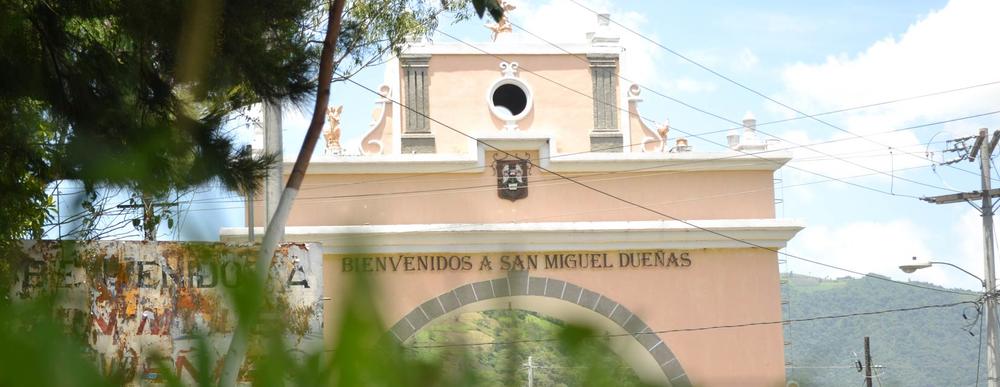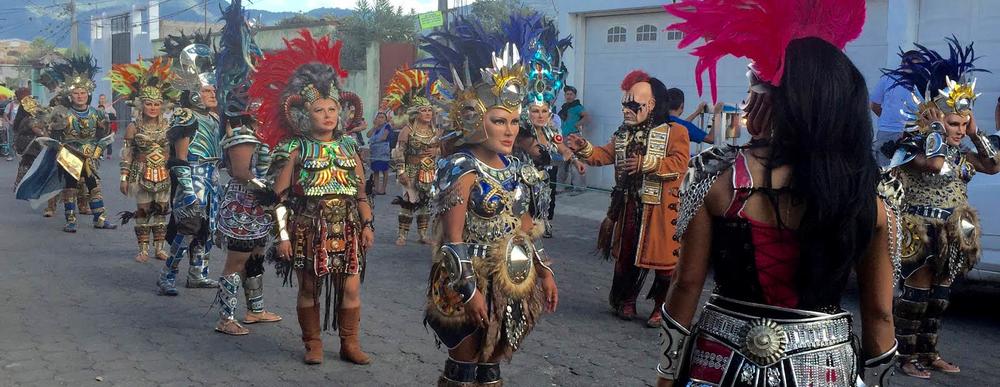Posted on Feb 11, 2019 |
Fifth post on villages around Antigua Guatemala ( Sacatepequez Guatemala ), we will talk about two villages per week. For this fifth article we’ll include two small but important villages, these are Pastores and San Miguel Dueñas, both are quite worth to learn from and visiting.
Pastores
The village of Pastors was established as such in the sixteenth century, it was known for some time as 'Molino de Pastores', and was founded by Rodrigo Maldonado, where he planted corn of Mexican origin. However, there is another version less popular in history that says that Pedro de Alvarado founded this village for the raising of sheep and lambs. For a long time, it was called "San Dionisio Pastores" (town’s patron), and today it is commonly called "shepherds".

From 1825, the village of "Pastors" is part of the department of Sacatepequez, later the town San Lorenzo El Tejar was annexed to Pastors since August 1935. Its predominant language is Spanish and Kaqchikel for the indigenous population. The cultural identity of the village has been Kaqchikel, however, due to the growth of tourism in and around Antigua Guatemala, this identity has been gradually lost.
Its main economy is based on large coffee farms, followed by cotton fabrics, ceramics and wooden furniture production. However, it is also an important tourist attraction, since here is the Balneario San Lorenzo, an attraction for aquatic adventure tourism.
Most of the population of "Pastors" profess the Catholic religion, something we can see in the activities carried out during Holy Week, where Catholic fervor is printed on rugs, processions and vigils.

One of the reasons why the village of "Shepherds" is well known for the sale of boots. A tradition and manufacture that began in 1965, when six young people from the village learned the art of making boots in Antigua Guatemala. Eventually, each one of them starts his own business in the manufacture of boots of excellent quality, motivating new artisans to learn and dedicate themselves to this art. Today, "Shepherds" visited visited by locals and foreigners by selling their high quality boots.
San Miguel Dueñas
The village is framed by the three volcanoes of the area, Volcan de Fuego, Volcan Acatenango and Volcan de Agua, its patron saint is Arcángel San Miguel. It is believed that the village was founded by Pedro de Alvarado (conqueror of Guatemala) in 1530 so that the plantations that the Indians made would be used to economically support the widows of the Spanish soldiers killed in the Jalpatagua battle, for this reason the village is called "Dueñas" ", which means owners. Other versions attribute the name to Miguel Dueñas, who was the brother of Pedro de Alvarado.

One of the charms of this picturesque village are its green landscapes and lands suitable for the cultivation of flowers, corn, beans and fruits, it is also known for the cultivation of macadamia. The patronal celebration of the village is every September 29, in honor of Arcangel San Miguel, also called “Principe de los Espíritus Celestiales” (Prince of Heavenly Spirits); on this date the small town celebrates with great joy, the sound of fireworks can be heard beyond its borders.
The celebration begins 20 days before with the tradition of the so-called "San Miguelito entraditas", this tradition consists on San Miguelito visiting 20 families every day for 20 days until September 29. The story of "San Miguelito" began in the year 1600, when an image representing Saint Michael Arcangel appeared on a rock on the outskirts of the small town, the villagers took the image to Old City to give it to the priest of the Catholic Church, but the image disappeared and appeared again the next day on the same rock.

San Miguel Dueñas is also known for its three rivers, these are Guacalate, Choy and Ramuxaca. This last river is famous for its waterfalls, however, it is difficult to access due to the lush forests that surround it.
If you visit San Miguel Dueñas, the Valhalla Farm of Macadamia nuts a must-stop. The farm offers a tour for locals and tourists who wish to learn about the organic production of this seed and the products that are made with macadamia, from traditional foods to cosmetics. The farm also has an open-air restaurant.

Today, 78% of its population is of ladino ethnicity, the remaining 22% is Kaqchikel.
Latest Posts
-
Easter Week 2025 Schedule Processions Antigua Guatemala
- Mar 02, 2025 -
Ten Beautiful Words in the Spanish Language
- Jul 13, 2024 -
Easter Week 2024 in Antigua Guatemala
- Feb 04, 2024



